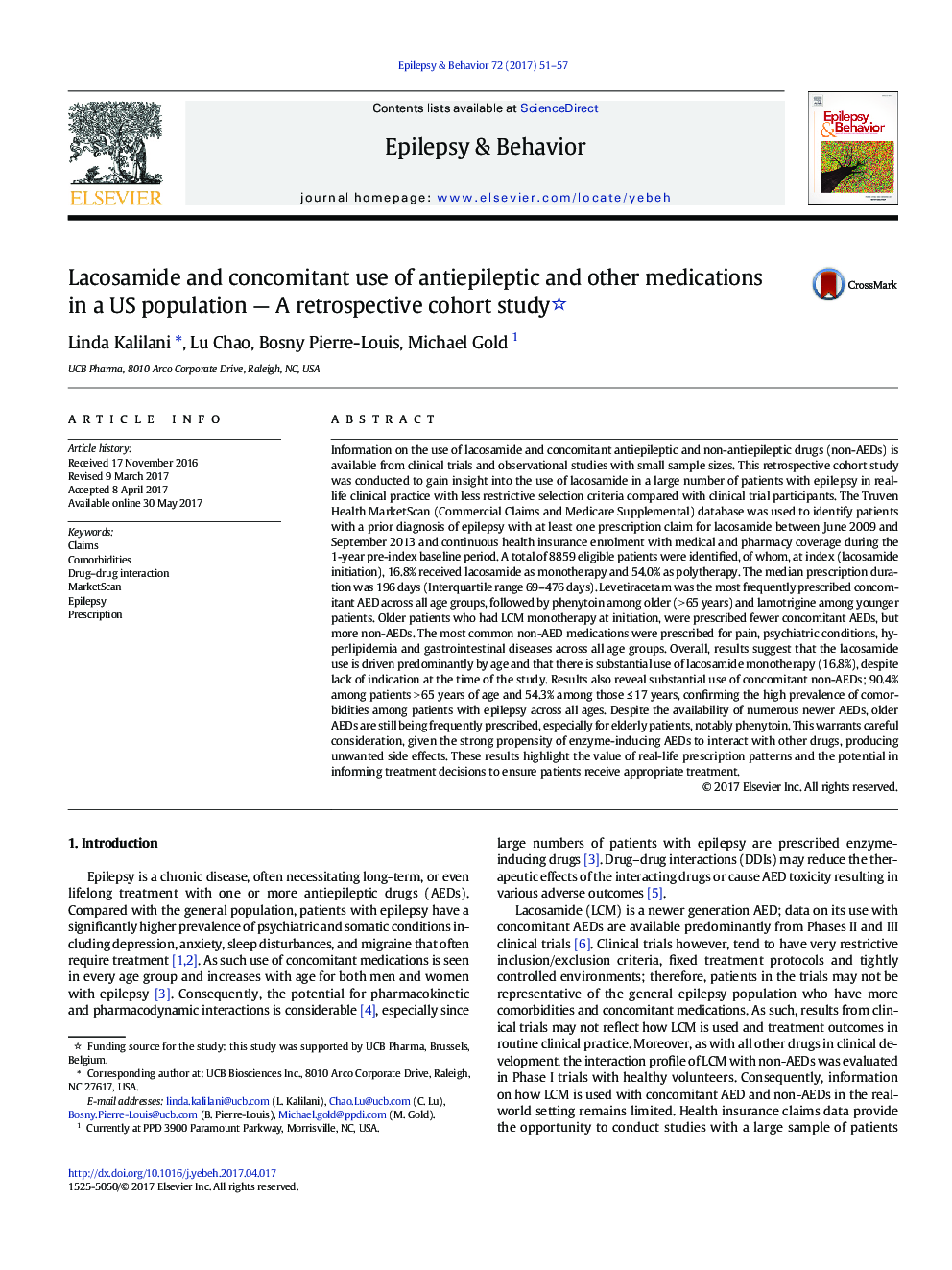| کد مقاله | کد نشریه | سال انتشار | مقاله انگلیسی | نسخه تمام متن |
|---|---|---|---|---|
| 5628249 | 1579821 | 2017 | 7 صفحه PDF | دانلود رایگان |

- Data on lacosamide and concomitant drug use in real life settings are limited.
- Patterns of lacosamide use were associated with age.
- There was substantial use of concomitant drugs across all ages.
- There was substantial use of lacosamide monotherapy, especially among the elderly.
- Use of older, enzyme-inducing AEDs remains high, especially among the elderly.
Information on the use of lacosamide and concomitant antiepileptic and non-antiepileptic drugs (non-AEDs) is available from clinical trials and observational studies with small sample sizes. This retrospective cohort study was conducted to gain insight into the use of lacosamide in a large number of patients with epilepsy in real-life clinical practice with less restrictive selection criteria compared with clinical trial participants. The Truven Health MarketScan (Commercial Claims and Medicare Supplemental) database was used to identify patients with a prior diagnosis of epilepsy with at least one prescription claim for lacosamide between June 2009 and September 2013 and continuous health insurance enrolment with medical and pharmacy coverage during the 1-year pre-index baseline period. A total of 8859 eligible patients were identified, of whom, at index (lacosamide initiation), 16.8% received lacosamide as monotherapy and 54.0% as polytherapy. The median prescription duration was 196 days (Interquartile range 69-476 days). Levetiracetam was the most frequently prescribed concomitant AED across all age groups, followed by phenytoin among older (> 65 years) and lamotrigine among younger patients. Older patients who had LCM monotherapy at initiation, were prescribed fewer concomitant AEDs, but more non-AEDs. The most common non-AED medications were prescribed for pain, psychiatric conditions, hyperlipidemia and gastrointestinal diseases across all age groups. Overall, results suggest that the lacosamide use is driven predominantly by age and that there is substantial use of lacosamide monotherapy (16.8%), despite lack of indication at the time of the study. Results also reveal substantial use of concomitant non-AEDs; 90.4% among patients > 65 years of age and 54.3% among those â¤Â 17 years, confirming the high prevalence of comorbidities among patients with epilepsy across all ages. Despite the availability of numerous newer AEDs, older AEDs are still being frequently prescribed, especially for elderly patients, notably phenytoin. This warrants careful consideration, given the strong propensity of enzyme-inducing AEDs to interact with other drugs, producing unwanted side effects. These results highlight the value of real-life prescription patterns and the potential in informing treatment decisions to ensure patients receive appropriate treatment.
Journal: Epilepsy & Behavior - Volume 72, July 2017, Pages 51-57